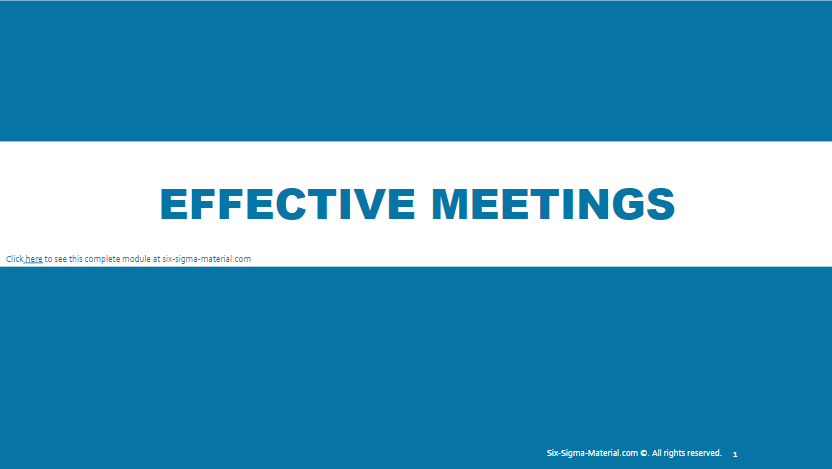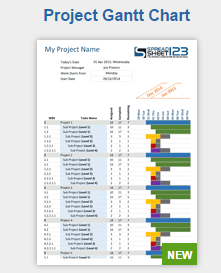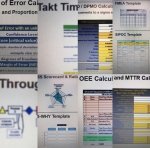Effective Meetings
Description:
Conducting effective meetings will help you as a Project Manager to keep the team engaged and participating. Your team will also be appreciated by team members and others in the company. Below are tips for holding effective meetings delivered in person, video, on-site, or a combination of them.
As a Six Sigma Project Manager, a large part of the project outcome is related to how well you control the team, develop positive momentum, handle adversity, and create chemistry.
Video meetings are the new norm. However, they come with plenty of unexpected surprises. Have a backup plan if the video is not able to function.
Objective:
Your job is not to have the answers to the Problem Statement but to gain the respect of the team, use the appropriate tools, and execute the project.
Your job is to foster dialogue, sort through and block the noise, remove roadblocks, manage the relevant data and ensure its accurate, and present it to the stakeholders. They will have the answers and ideas, your job is to bring the best out of them.
Depending on project scope, it may require several meetings throughout the process. Respect the busy schedules of members but firm enough to require attendance and participation.
Tips for Effective Meetings - Presentation

Members: You can download this presentation (and other free downloads) by going to the "Member Offers" section along the top of the screen after logging into your account.
Non-Members: There is an option to purchase this presentation and others at the following link. Click Here
General Guidelines for Effective Meetings
Below is a checklist of general meeting guidelines in chronological orders (some of these take place concurrently).
- Contact the audience 24 hours in advance with a reminder.
- Respect their busy schedules but firm enough to require their attendance and participation.
- For Six Sigma projects, you want the team members to PARTICIPATE. Remind them of this expectation as part of being selected on the team.
- Email an agenda (this can also be the reminder).
- Share the meeting ground rules prior to starting the meetings. Such as no cell phones, hold questions until the end, etc.
- Arrive to your meeting 10-15 minutes early.
- Start the meeting on-time. You may elect to start slowly or with small delay if people are arriving late.
- Ensure everyone is on mute to avoid background noises.
- Avoid interrupting. If others begin to interrupt each other, find a time to intervene and direct who can speak.
- Try to stick to facts and support your thoughts with facts but communicate only relevant data and information. Keep it simple.
- Be concise. Speak clearly with a fluid pace…avoid “ahh”, “like”, "umm", and other filler words.
- Challenge ideas or topics, not the person.
- Respect the opinions of others. You can disagree without being disagreeable.
- Keep meeting to under one hour. Any longer tends to lose their attention. If the meeting must be longer than an hour, plan for breaks.
- Summarize key points and actions at the end.
- Don't read the words directly from the slides. Add some "color" to the points, examples, or real experiences.
- Follow up with the audience with a summary and any action items.
- Body language is a whole other art. Practice this too if you're standing in front of a group or whether on a video meeting.
- Maintain eye contact.
- For longer meetings it may be a good idea to take a break in the middle or change the speaker to provide a different voice.
Using Video
If you're using video software or other technological mediums to present:
- Arrive early and log on to test everything. This is especially important if you're presenting from a new location which you are unfamiliar.
- You may want to bring adapters, cords, etc. Or consider having a IT representative help.
- Consider recording the meeting. There may be company or local laws around this. If recording, let the audience know up front.
- Ensure the connection is good for (audio and visual) at the beginning.
- The last thing you want to do is start discussing items on your screen when some people cannot see your screen. And make sure your screen doesn't show anything that shouldn't be shown.
- Take attendance. You may want to have someone do this for you and also take notes during the meeting.
- Avoid reading directly from slides. The audience can do that. Prepare your words in advance. Add dialogue that supports the material on the slides.
- Spelling errors are unacceptable.
- Prepare handouts if the audience is in the room with you. assuming they are within reason. If there is confidential information, indicate that to the audience and collect the handouts at the end if necessary.
- Be careful using acronyms. Best practice is to spell them out unless your certain the audience will know the meanings.
- Consider more slides rather than squeezing more information on each slide. Size 18 font is recommended minimum.
- Yup....pictures are worth a thousand words.
- Use proper citation if necessary.
- Depending on content, you may want other departments to review and approve the material in advance such as Legal, HR, Accounting, etc.
- Summary the key points of the meeting at the end.
- Review any action items with person(s) responsible at the end.
Keep It Simple.
In some cases, it may be helpful to use real life examples or tell a quick story to support your positions or data. This is another good example of adding dialogue to a slide that is not actually written on any slide.
Summary
Effective meetings are just one of many factors involved in helping Project Managers succeed. Crafting efficient emails, creating relevant charts, mining through data, stakeholder analysis, are other key factors besides your technical Six Sigma prowess.
Anticipate the questions the audience may have and be ready to answer them within the presentation or off-line. Put yourself if their shoes.
Like many other outcomes in life, you'll get out of this what you put into it. Preparation is the key to getting a favorable outcome.
We also have another module of various ways to accelerate the completion of your Six Sigma project that is available to subscribers. Click here to learn more.
Return to the DMAIC project starting page

Site Membership
LEARN MORE
Six Sigma
Templates, Tables & Calculators
Six Sigma Slides
Green Belt Program (1,000+ Slides)
Basic Statistics
Cost of Quality
SPC
Process Mapping
Capability Studies
MSA
SIPOC
Cause & Effect Matrix
FMEA
Multivariate Analysis
Central Limit Theorem
Confidence Intervals
Hypothesis Testing
T Tests
1-Way ANOVA
Chi-Square
Correlation
Regression
Control Plan
Kaizen
MTBF and MTTR
Project Pitfalls
Error Proofing
Z Scores
OEE
Takt Time
Line Balancing
Yield Metrics
Sampling Methods
Data Classification
Practice Exam
... and more
Need a Gantt Chart?





